TechRadar Verdict
The Creality Ender 3 V3 KE sits just above the Ender 3 V3 SE in terms of range position and features, yet surprisingly it offers a slightly smaller print area. However, the enhancements are significant. Notably, the top print speed reaches an impressive 500mm/s, doubling the SE's 250mm/s. The fully featured touchscreen and WiFi connectivity elevate the machine's usability well beyond the entry-level model. Surprisingly, minor design tweaks have resulted in a substantially improved printer without a significant price increase. The print quality is excellent, though dimensional accuracy remains its only slight weakness, despite adjustments. Overall, the Ender 3 V3 KE is an incredible printer, nearly achieving a perfect score in benchmark tests, it really is that good.
Pros
- +
Robust design
- +
High-quality components
- +
User-friendly wireless control
Cons
- -
The Creality Mobile App lacks intuitiveness
- -
Absence of an enclosed system
Why you can trust TechRadar
The Ender 3 V3 KE bears a strong resemblance to the Ender 3 V3 SE in aesthetics and design. Surprisingly, for a higher-end model, it offers a marginally smaller build volume of 220 x 220 x 240 mm. Checking over the printer, it's difficult not to immediately delve into the differences between the KE and the SE, especially considering the additional cost of this newer model (you can see what we thought of the latter in our Creality Ender-3 V3 SE review).
Despite looking similar, the two machines have several distinct differences, many of which fundamentally impact both speed and quality. A notable upgrade in the KE is the full-colour touchscreen, which enhances the ease of navigation and control over the settings as well as prints.
Another big upgrade for the KE is the Wi-Fi connectivity, which enables remote control and monitoring through the Creality Slicer software. While the WiFi upgrade is handy, the big change is that this machine uses Klipper firmware, which significantly improves print quality at higher speeds and elevates this is a present generation machine. Furthermore, the KE impressively supports a maximum print speed of 500 mm/s that's double that of the V3 SE. To accommodate this increased speed, it is equipped with a linear rail on the X-axis, all to help minimise vibrations caused when printing at higher speeds.
The hotend in the KE is capable of reaching 300°C, which enables you to print with specialist filaments such as nylon, although the V3 KE is still an open frame design and not best suited to printing more advanced materials. The build plate has also been upgraded to flexible PEI bed surface, which makes it easy to remove prints. Overall, while the two machines may look similar, our experience with the best 3D printers tells us the KE is a significant leap forward in technology, speed, and quality.
Creality Ender-3 V3 KE: Design
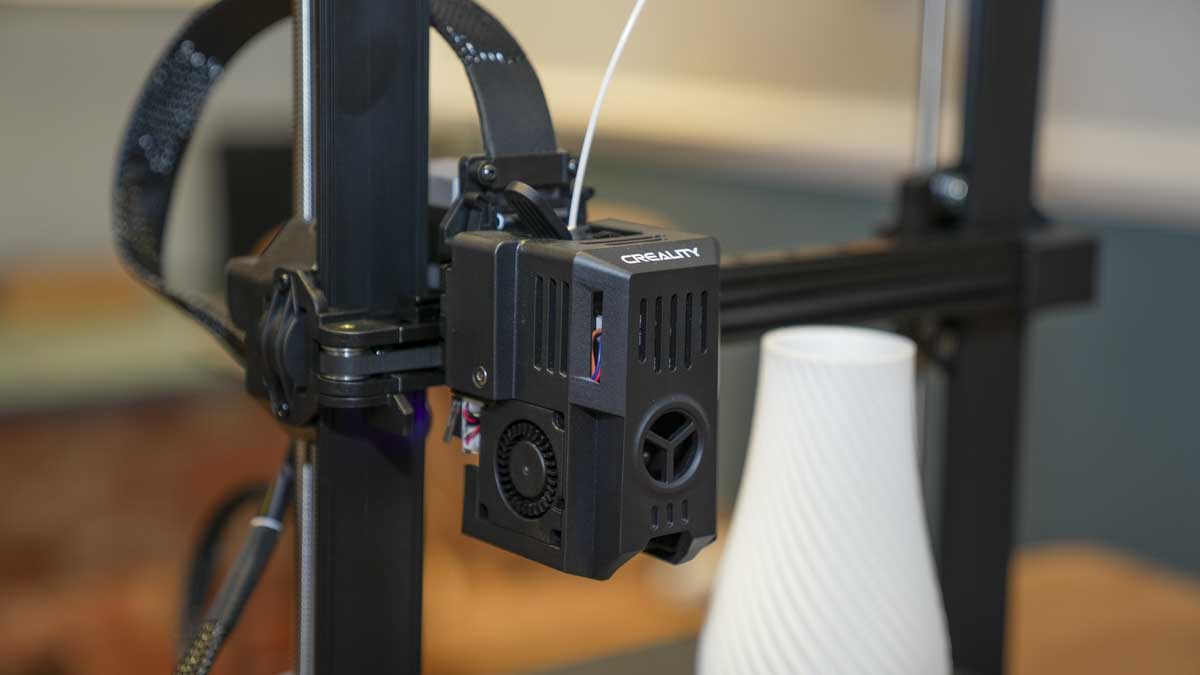
Design-wise, the Creality Ender 3 V3 KE adopts the familiar bed-slinger Cartesian layout. Side-by-side with the SE, it appears very similar. However, closer inspection reveals design tweaks that mark it as the next-level machine, such as the full touchscreen interface, Wi-Fi connectivity, and a linear rail that adds extra rigidity to the system.
The print head now features two fans for rapid cooling at higher speeds of up to 500mm/s. The new 60W ceramic heater hotend is a significant upgrade in material compatibility. It's important to note, though, that this remains an open system, not enclosed, which is generally preferred for advanced materials.
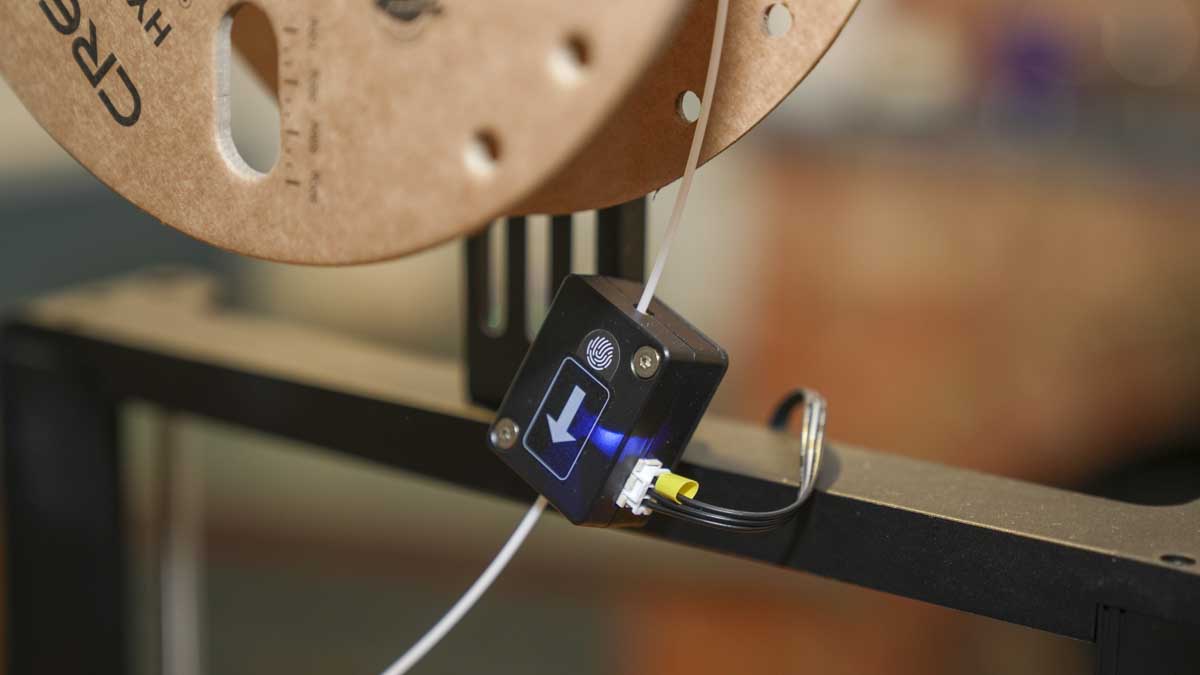
On the X-Axis, the solid linear rail, common in many upgraded printers, provides a smooth track and helps minimize vibrations more likely with the standard dual rod designs.
Levelling in 3D printers has seen rapid advancements, and the Ender 3 V3 KE includes a convenient one-tap system. A notable aspect of the design is the addition of Wi-Fi connectivity via Creality Print software, even at this budget level, allowing direct computer print sending and print progress monitoring. While the machine doesn't come with a camera, one can be easily added.
The printer comes with an extensive range of standard features and offers additional upgrades. One such upgrade is the AI camera, proven valuable in models like the K1 and K1 Max. Another is the Vibration compensation sensor, a simple DIY addition that can further enhance the printer's capabilities.
Creality Ender-3 V3 KE: Features
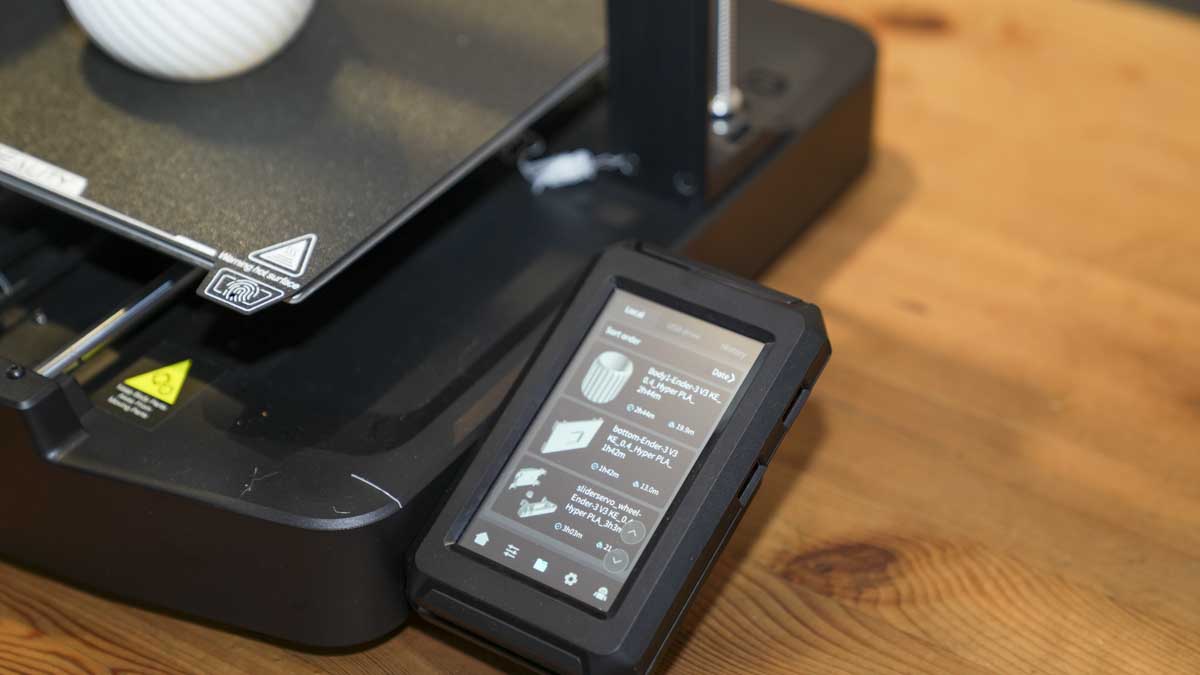
The Creality Ender 3 V3 KE, while a budget 3D printer, boasts features that have only just started to filter down to printers with this price tag, and combine high-end functionality with user-friendliness.
A standout feature is its advanced motion system, highlighted by a precise X-axis linear rail. This contributes to enhanced stability and reduced vibrations, particularly during high-speed prints. With a maximum speed of 500 mm/s, the Ender 3 V3 KE stands out in its category for print speed, even outpacing the slightly less expensive Ender 3 V3 SE.
Navigating through the machine's options is easy with the full-colour touchscreen, making the whole printing process as well as maintaining the printer far easier. The addition of Wi-Fi connectivity for remote monitoring and control through Creality Slicer further boosts the overall ease of use. A camera would be a nice touch, and while there isn't one as standard Creality has ensured that there's an option to add one if you want.
Central to the Ender 3 V3 KE's performance is its high-capability hotend, which can reach temperatures up to 300°C. This hotend does increase the printer’s material compatibility, accommodating a range of filament types, including high-temperature materials like nylon and ABS, although when using these materials the option enclosure will also be needed.
Print Technology: FFF (Fused Filament Fabrication)
Build Area: 220 x 220 x 240 mm
Minimum Layer Resolution: 0.1 mm
Maximum Layer Resolution: 0.35 mm
Dimensions: 433x366x490mm
Weight: 7.8kg
Bed: Maximum temperature of 100°C
Print Surface: PEI bed surface
Software: Compatible with standard slicers; includes Creality Print (based on Cura) and advanced firmware features based on Klipper.
Materials: PLA, PETG, TPU, PA, nylon, and high-temperature materials with an enclosure
Print Speed: Maximum 500 mm/s, typical around 300 mm/s
The build surface of the printer features a PEI bed, known for an optimal balance of strong adhesion and ease of print removal. This magnetic and flexible surface aids in the post-printing process; the days of battling the print bed to release the print are now thankfully well behind us.
Software compatibility includes most standard slicers, with the printer coming equipped with Creality Print, a user-friendly slicer based on Cura. Its firmware, drawing inspiration from the open-source Klipper project, includes features like input shaping and motion advancement. These contribute to enhanced print quality, mitigating issues like ghosting and ringing, especially at higher speeds.
Assembly and maintenance are made easy with most parts arriving semi-assembled. This eases the setup process, a trend now common among most manufacturers. The semi-assembled approach is crucial for ensuring that the process of unboxing and getting started is accessible to users at all levels, particularly important for those new to this calibre of printer.
Creality Ender-3 V3 KE: Performance
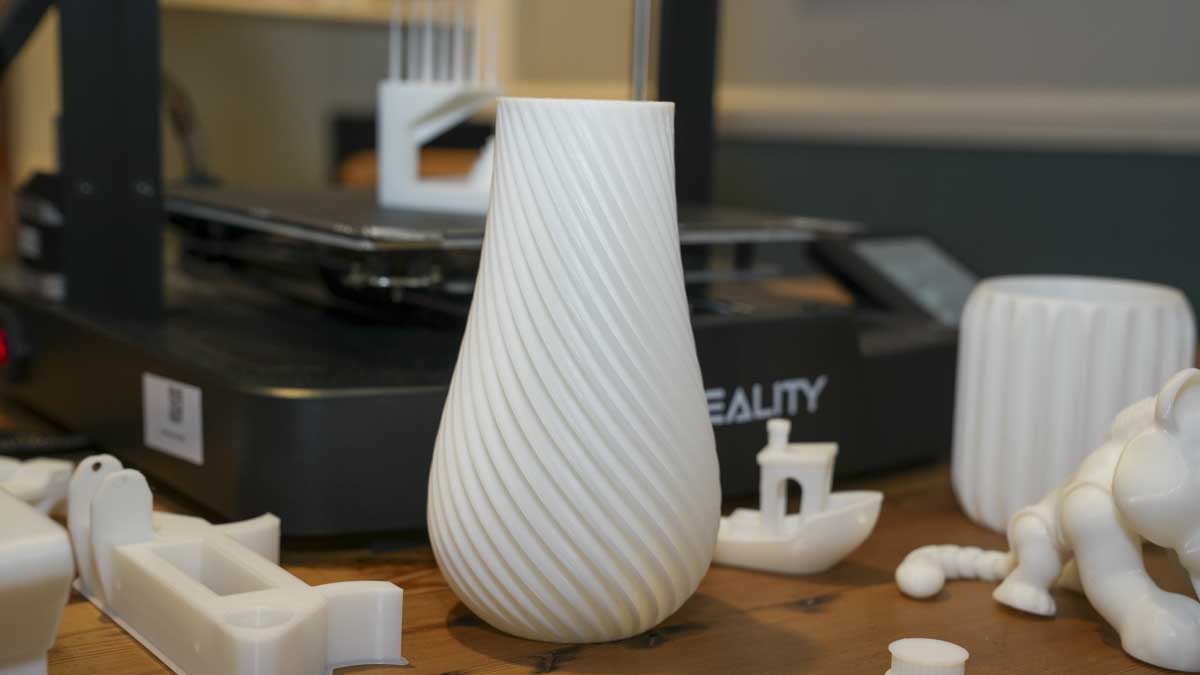
When it comes to the print quality and performance of the Creality Ender 3 V3 KE like all printers, it has strengths and limitations that cater to different user groups; in the case of this printer that's those new to 3D printing. What is a surprise is that even as an entry level printer, it achieves a score of 28 out of 30 which for any printer would be impressive and even more so considering the cheap price of this model.
Dimensional accuracy, with a score of 3, shows some room for improvement, and even after a few tweaks to belts and other settings without changing the print mode, this score was consistent. The printer demonstrated varying degrees of error in the X and Y dimensions across different target sizes, with an average error of 0.19mm in X and 0.1mm in Y. This level of accuracy might pose challenges for professional applications where precision is crucial but should be seen as excellent for hobbyists, crafters, and 3D print enthusiasts.
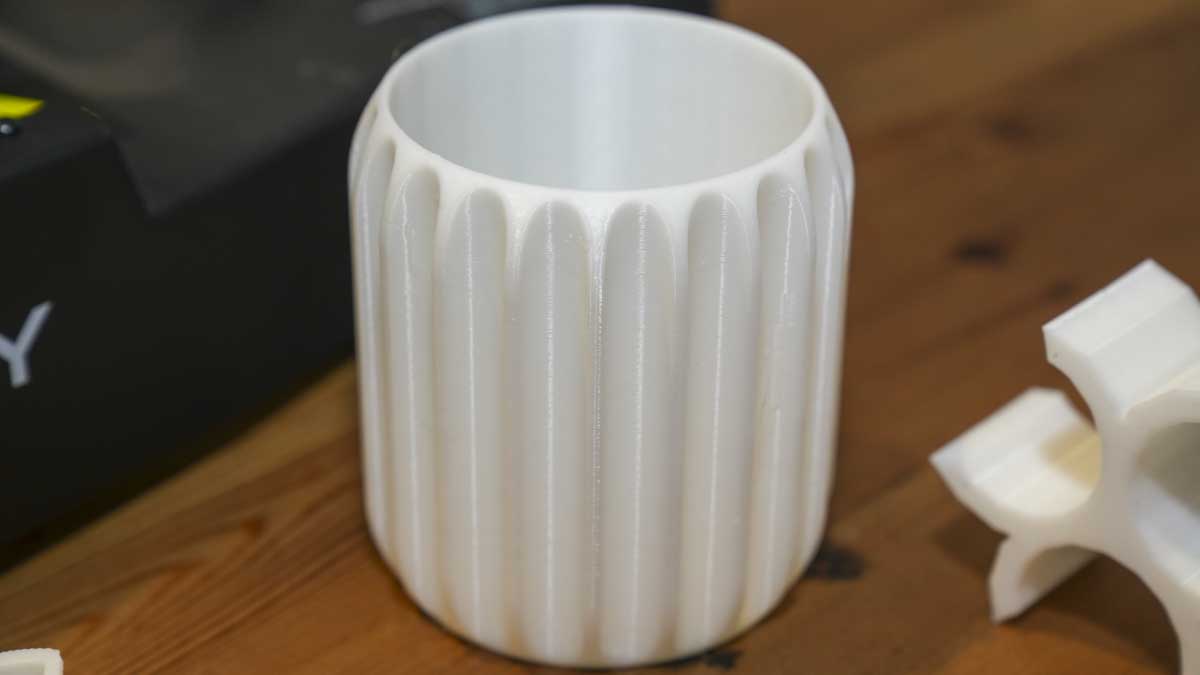
The Ender 3 V3 KE's open frame design does make it less compatible with materials such as ABS that need to be used in controlled environments, despite the hotend being able to reach the temperatures required. In professional and educational places, this restriction could be a problem; however, an optional enclosure can be purchased to create the right environment for these advanced materials.
The printer also scores well in the XY resonance and Z-axis alignment tests, each with a score of 2.5. These aspects affect the surface finish and overall aesthetics of the print and show that the printer is capable of producing good, clean prints.
Creality Ender-3 V3 KE: Print quality
Dimensional accuracy - score of 3
Target 25 = X: 24.72mm / 0.28mm Error | Y: 25.18mm / 0.18mm Error
Target 20 = X: 19.93mm / 0.07mm Error | Y: 20.03mm / 0.03mm Error
Target 15 = X: 14.74mm / 0.26mm Error | Y: 15.15mm / 0.15mm Error
Target 10 = X: 9.91mm / 0.09mm Error | Y: 10.09mm / 0.09mm Error
Target 5 = X: 4.75mm / 0.25mm Error | Y: 5.05mm / 0.05mm Error
X Error Average = 0.19
Y Error Average = 0.1
X&Y Error Average = 0.29
Fine Flow Control - score of 5
Fine Negative Features - score of 5
Overhangs - score of 5
Bridging - score of 5
XY resonance - score of 2.5
Z-axis alignment - score of 2.5
Adding up the totals gives a final score of 28 out of 30.
Creality Ender-3 V3 KE: Final verdict
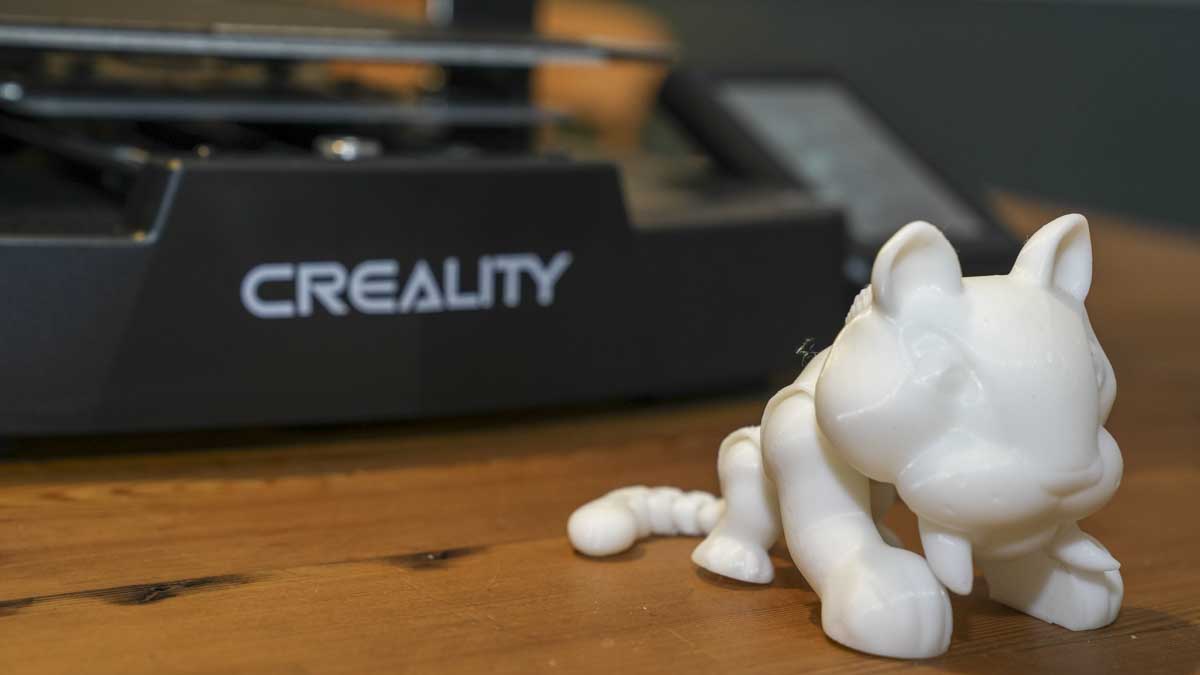
For the price, the Creality Ender 3 V3 KE is a great printer that will appeal to both beginners, and experts on a budget, even though it doesn't have the sleek look of higher-end models like the Bambu Labs A1 or Creality's own premium machines.
Printer setup is quick, especially with the touchscreen interface and software, which makes everything from calibration to printing and maintenance easy. The print quality is superb, resulting in one of the highest scores in these tests. However, the printer does falter slightly when it comes to dimensional accuracy, though it excels in producing fine negative features. Checking belt tensions, adjusting settings and reducing the print speed can improve dimensional accuracy, but even with these tweaks, the performance in this area remained the same.
Overall, the Creality Ender 3 V3 KE stands out as an excellent entry-level option. If your budget allows stretching beyond the sub-$200/£200 range, this extra investment is likely to be well worth it, rewarding you with a reliable and capable 3D printer.
Should You Buy the Ender 3 V3 KE?
Buy it if...
You're a hobbyist or craft-maker
Ideal for those who enjoy 3D printing as a hobby or for crafting purposes. Its exceptional print quality, ease of use, and advanced features like WiFi connectivity and touchscreen interface make it a great choice for personal projects and creative explorations.
You're looking for a 3D printer upgrade
Perfect for users looking to step up from more basic models. The Ender 3 V3 KE offers significant improvements in speed, user interface, and print capabilities, making it a worthy investment for those seeking enhanced performance without breaking the bank.
Don't buy it if...
You need professional-grade precision
Not the best fit for professional use where high dimensional accuracy is crucial. While it performs well overall, its slight limitations in precision might be a deal-breaker for those needing exact measurements for complex professional projects.
You use advanced materials
Not ideal for users who need to print with advanced materials that require controlled environments, such as ABS. The printer's open design limits its ability to handle certain materials, which might be a constraint for some advanced users or educational settings.
- Best 3D modeling software: Tested, reviewed, rated
